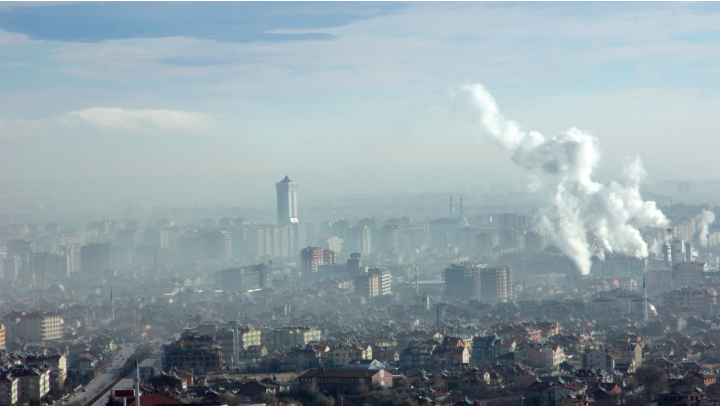
Revolutionising Air Quality Monitoring in Urban Areas Using Drones
Discover how drones are revolutionizing air quality monitoring in urban areas with real-time data collection, enhanced spatial resolution, and cost-effective solutions, helping to combat pollution and improve public health.
-

Abhijit Shingate
CEO & Founder
Introduction
Air pollution is a significant global concern, especially in urban areas where population density and industrial activities contribute to the emission of harmful pollutants. The adverse effects of poor air quality on human health and the environment demand innovative solutions to monitor and mitigate pollution levels. In recent years, the integration of drones into air quality monitoring has emerged as a game-changing approach. This article explores how drones are revolutionising air quality monitoring in urban areas and the potential benefits they offer.
Real-time Monitoring
Traditional air quality monitoring systems typically consist of fixed monitoring stations that provide limited coverage across a city. However, drones equipped with advanced sensors can offer real-time monitoring capabilities, allowing for precise and comprehensive data collection. These drones can swiftly navigate through urban environments, capturing air quality information from multiple locations, and transmitting data instantaneously. Such real-time monitoring enables authorities to identify pollution hotspots, make timely interventions, and provide accurate public health advisories.
Enhanced Spatial Resolution
One of the key advantages of drones in air quality monitoring is their ability to collect data with high spatial resolution. Unlike stationary monitoring stations, drones can access hard-to-reach areas such as congested city streets, industrial sites, and construction zones. This spatial advantage enables a more detailed assessment of pollution patterns, facilitating targeted pollution control strategies and localised interventions.
Mobility and Flexibility
Drones offer unmatched mobility and flexibility in monitoring air quality, making them highly adaptable to the dynamic nature of urban environments. They can be quickly deployed to areas of interest, making them ideal for monitoring pollution during events like festivals, protests, or industrial accidents. Drones can also be programmed to follow predefined flight paths or respond to real-time pollution alerts, ensuring continuous monitoring and rapid response to changing conditions.
Cost-effectiveness
Deploying traditional air quality monitoring stations across a city requires significant infrastructure investment and ongoing maintenance costs. In contrast, drones offer a cost-effective alternative. While the initial investment in drone technology and sensors is required, the operational costs of drones are relatively lower. Drones can be operated by a small team, require minimal ground infrastructure, and can cover larger areas efficiently. This cost-effectiveness allows for the scaling up of air quality monitoring networks and wider implementation in urban areas.
Data Integration and Analysis
The data collected by drones can be integrated with geographic information systems (GIS) and other analytical tools to derive valuable insights. Combining air quality data with information about traffic patterns, weather conditions, and population density can provide a holistic understanding of pollution sources and their impacts. This integrated approach enables policymakers, urban planners, and environmental agencies to develop evidence-based strategies for pollution control, land-use planning, and public health management.
Public Awareness and Engagement
Drones in air quality monitoring can play a vital role in raising public awareness about pollution levels and its associated health risks. The visual and real-time nature of drone-collected data can be shared with the public through online platforms, mobile applications, or media channels. This transparency helps citizens understand the severity of the problem, promotes behavioural changes, and fosters community engagement in environmental initiatives.
Conclusion
Air quality monitoring in urban areas has been significantly enhanced by the integration of drones into monitoring systems. Drones provide real-time data collection, high spatial resolution, mobility, and cost-effectiveness, revolutionizing the way we monitor and address air pollution. By leveraging drone technology, policymakers and environmental agencies can make informed decisions, implement targeted pollution control measures, and ultimately improve the air quality in urban areas. The continued advancement of drone capabilities, coupled with data integration and public engagement, holds great promise for a healthier and sustainable urban environment.

Exadatum
Exadatum is a leading technology company specializing in data analytics, data science, data engineering, and large-scale systems. With a strong focus on leveraging AI, Robotics and Drones, Exadatum is building next generation products and services.
-

Abhijit Shingate
CEO & Founder
Abhijit's deep passion lies in the realm of innovation. Throughout his career, he has consistently achieved remarkable results, committing himself to harnessing data-driven solutions and state-of-the-art AI technologies to transform the drone and robotics industry.
Do you want to be part of exciting journey of the future of AI, Robotics and Drones?
With the convergence of data, AI, robotics, and drones, we see immense potential for transformative impact across industries. Leveraging our expertise in data analytics, AI, and large-scale systems, we are determined to shape the future of robotics and drones by infusing intelligence and autonomy into these technologies.
© 2023 Exadatum Software Services Private Limited. All rights reserved.